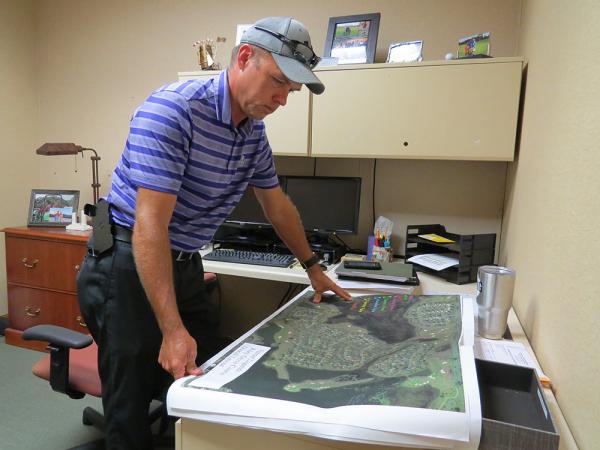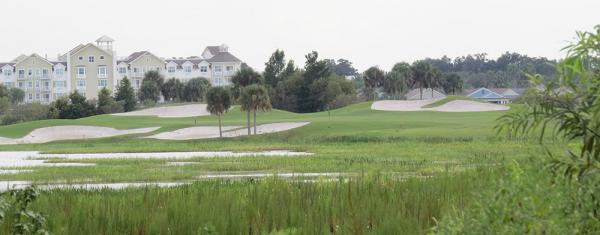Don't be surprised if one day The Villages shows up on Discovery as the subject of an episode of Mythbusters.
 If you haven't been to The Villages, chances are you at least have seen commercials on television promoting it as a retirement destination for avid golfers or those who are just plain sick of northern winters. Like just about every other 55-and-older community in Florida, it has been defined by stereotypes. There are some there who are trying to break down those walls.
If you haven't been to The Villages, chances are you at least have seen commercials on television promoting it as a retirement destination for avid golfers or those who are just plain sick of northern winters. Like just about every other 55-and-older community in Florida, it has been defined by stereotypes. There are some there who are trying to break down those walls.It's the kind of stereotype Mythbusters Adam Savage and Jamie Hyneman have been debunking on TV for 15 years.
Since the first mobile home was planted in the early 1970s in the old Orange Blossom Hills development in north-central Florida, the area that eventually became known as The Villages has been labeled as a haven for senior citizens on the prowl for cheap golf, manhattans and early bird specials.
Some of that is true and comes with the territory of operating a property that caters to retirees.
The Villages' own radio station, WVLG (of course) cranks out real estate ads and classic hits . . . like "Solitary Man" by Neil Diamond, Abba's "Knowing Me, Knowing You" and just about anything by Barry Manilow . . . over speakers in nearly every retail and dining area on the property (and there are a lot of them), and it seems like everyone here owns their own golf car.
While some of those stereotypes are well earned. There are other factors that define this area that once epitomized rural Florida.
One of the fastest-growing population centers in the country, The Villages is home to more than 116,000 well-heeled retirees and spans about 40 square miles across parts of three counties, making it the 12th-largest city (by population) in Florida - if indeed it were a city, which it is not.
We have 630 holes, and we did 3 million rounds last year. These courses are busy all the time. This is the best untold story in golf, and that's why it's important to get the message out that this is such a great opportunity for assistants and interns."
It encompasses an exhaustive network of support services that includes schools and what has to be one of the country's greatest concentrations of banks and financial institutions anywhere not named Wall Street.
In reality, The Villages is an elaborate and complex operation that not only is home to retirees, but employs, either directly or indirectly, thousands of working professionals. It's a backstory few consider when that
plays during TV commercials.
The Villages also includes an exhaustive network of support services and 600-plus meticulously managed holes of golf spread across nearly 50 separate nine- and 18-hole courses and even an intricate and complex matrix of retention areas, canals and pump stations capable of moving vast amounts of water several miles.
This ain't your granddad's retirement community. OK, well maybe it is, but you get the point.
Marketed as Florida's Friendliest Hometown, The Villages also is a great place for wannabe superintendents to ply their trade and gain valuable experience, says the man in charge of maintaining more than a third of the golf holes here.
"It's surprising how little people really know about what is here," said Rickey Craig, superintendent over all championship courses at The Villages and two nine-hole executive courses scheduled to open in late October.
"We have 630 holes, and we did 3 million rounds last year. These courses are busy all the time. This is the best untold story in golf, and that's why it's important to get the message out that this is such a great opportunity for assistants and interns."
A native of nearby Center Hill in Sumter County and a graduate of the golf turf program at Lake City Community College (now Florida Gateway College), Craig cut his teeth at some of Florida's more renowned golf facilities, including TPC Sawgrass in Ponte Vedra Beach as well as Grand Cypress, Isleworth Country Club and Shingle Creek, all in Orlando. He grew-in and built Shingle Creek, where he was superintendent for 14 years before making the move to The Villages almost two years ago.
With a pedigree like that, why the move to The Villages?
That's easy, said Craig, who now manages 234 holes on what soon will be 13 separate golf facilities. And the pressure to produce top playing conditions is high every day, and Craig would have it no other way.
"There is no job like this in the world," he said. "It's a unique property in our business. There is no place else where you can go and be over so many golf courses, where golf is still the priority and where you are expected to provide a good, quality product."
The master planned community is about an hour north of Orlando and encompasses more than 40 square miles in Sumter, Lake and Marion counties.
The development includes 36 nine-hole courses and a dozen country club facilities. Two more nine-hole layouts are scheduled to open in October.
Weather, soil and playing conditions at one course can vary greatly from another because the property is so large. For example, it's 10 miles by car between 18-hole layouts Glenview on the property's northern tier to Bonifay on the southern edge.

Dozens of retention areas throughout The Villages are connected by canals and an array of pumps to manage movement of water around the property. The only exceptions are a few environmental wetlands managed by the Southwest Florida Water Management District, which also has the authority to limit irrigation schedules within The Villages.
"This place is so big that you can get 2 inches of rain at one end of the property and none at the other," Craig said.
"In the spring, we're extremely dry because of water allocations. In the summer, we have to move water because it rains so much."
Arnett Environmental manages flow between water bodies and recently worked with the CDDs, the developer, Craig and a trio of management companies that operate the original 36 nine-hole courses to run irrigation on the golf courses to draw down water levels as part of a flood-prevention plan in advance of Hurricane Irma.
"This has been much more than I was expecting, and I grew up around here, so I watched it being built from the beginning, going back to the old Orange Blossom Hills days," Craig said. "I've seen it grow and develop, and I'm still learning something new every day."
Adam and Jamie would be proud.

